1977 Chevrolet Vega Estate: Needle in a haystack in Monmouth!

Another Vega? As Marge Gunderson said in Fargo: Oh, yeah! One would think in this day and age that finding a Vega, the notorious GM subcompact that polarized so many, would be a difficult task. But some way, somehow, I keep finding them. Or word’s gotten out and they’re finding me!
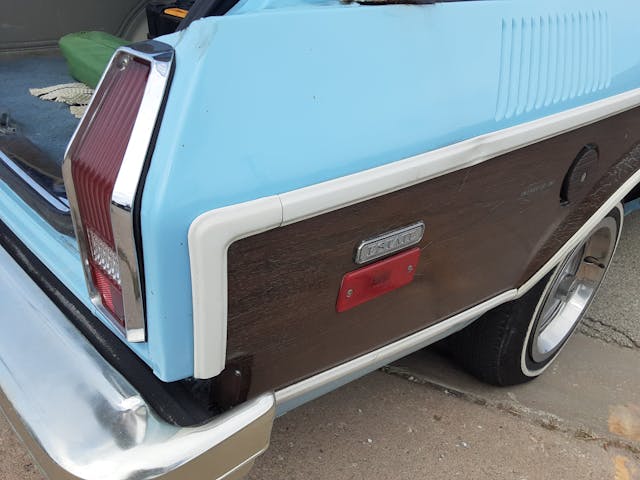
I’ve mentioned it before, but the Maple City Cruise Night, held annually in the small college town of Monmouth, Illinois, is a must-attend event for me. Essentially, the whole town turns into a car show. And anything goes! It’s a show where you really never know what you’ll see. I love that.

Last year there was a mint condition 1977 AMC Gremlin X. In previous years I’ve seen a 1976 Continental Mark IV with the Lipstick Luxury Group, a 1959 Dodge Royal Lancer, spectacular 1964 Cadillac Series 62 in Turino Turquoise, a 1976–77 Mustang II Ghia, a remarkably well-preserved sky-blue 1973 Pinto Squire, and a giant red 1974 Cadillac Eldorado convertible that would have done Big Enos Burdette (of Smokey and the Bandit fame) proud.

It isn’t like the local monthly or weekly cruise nights, where you start seeing the same cars over and over. Here, there is always something new. Some cars I’ve seen once and never again. You’ll see license plates from Iowa and Illinois and Missouri, sometimes even Wisconsin. It’s grand.
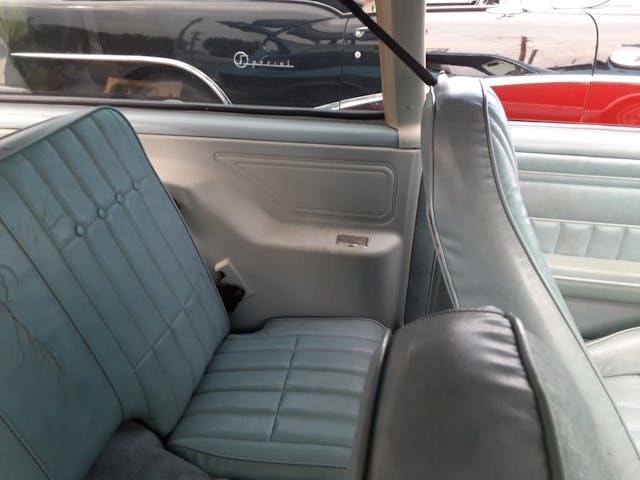
And so it was in August, when I hopped in the car and pointed it onto I-74 and then Highway 34 to Monmouth. As always, I made sure I had plenty of memory space in my camera and a fully charged battery. Once, at a Cadillac and LaSalle club show in Milwaukee, my camera flatlined just as I was taking pictures of a fantastic 1968 Fleetwood Series Seventy-Five limousine. I vowed then and there that I would never have that happen again.

But I am digressing again! Back to our featured car. When I initially posted a few pictures of this car on my Facebook page, my friend Jim Smith, who worked as a lot jockey at a big Chicago Chevy dealer back in the ’70s, had this to say: “Rare as a purple unicorn. I only recall having one, in white, in demo service at the dealership.”
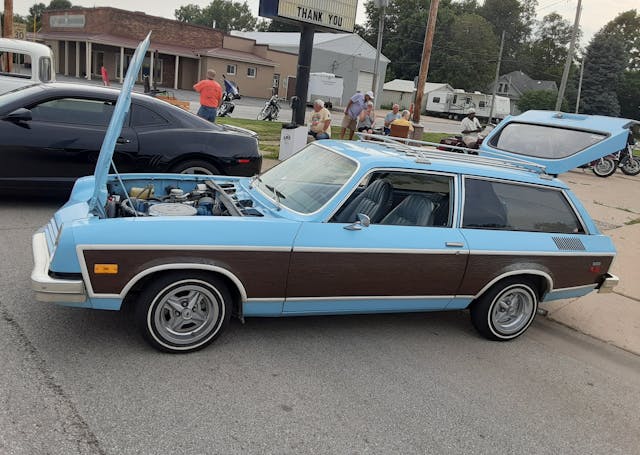
He wasn’t wrong. When I was researching in my home automotive library to write this column, I found that only 3461 Vega Estates were built for 1977, which was the last year for a Vega in any form. The non-woody version was much more plentiful, to the tune of 25,181 units.
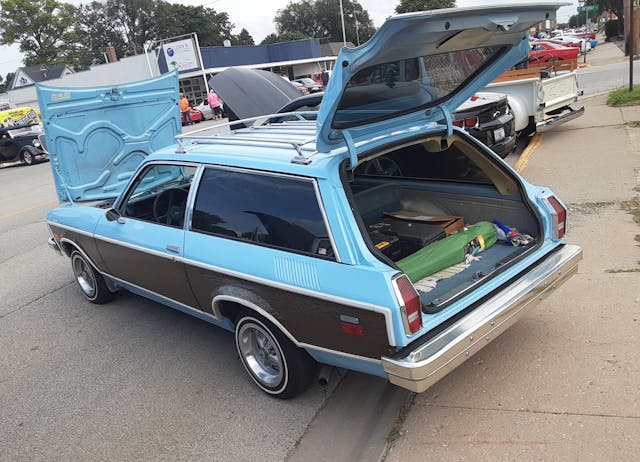
The ’77 Vega Estate had a base price of $3745 (about $18,975 today). As the 1977 Chevy station wagon brochure confided: “Vega. It might just be all the wagon you need.” And there was definitely a somewhat defensive tone in the description as well. Anyone around in the ’70s will remember the Vega had some teething issues upon its debut, the severity of which depends on who you ask, but regardless, rust, breakdowns and other functional complications were evident.
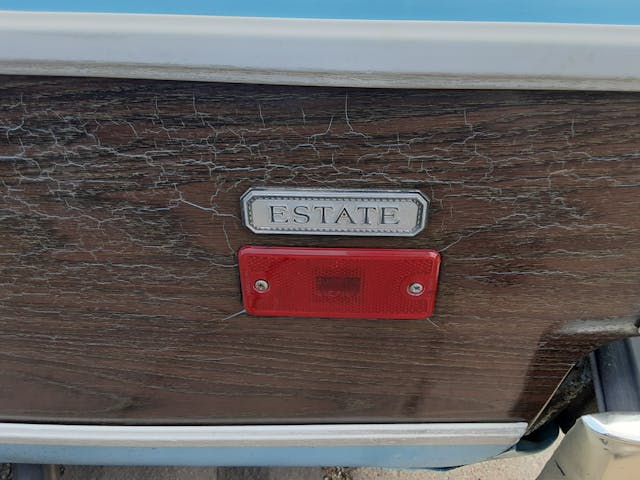
As the brochure continued, “Yes, it’s still the compact wagon that’s just right for today’s young thinker, regardless of age. And Vega’s still the wagon that offers an engine built to take it.
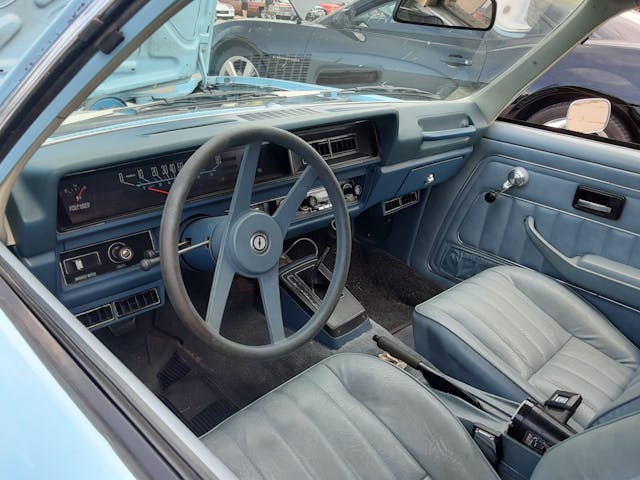
“We documented that when three 1976 Vegas, with Dura-Built 2-barrel carburetor engines, conquered 60,000 miles in and around Death Valley in 60 days in the summer of ’75. Maintenance was adjusted for dust conditions. Only one timing belt was replaced and 24 ounces of coolant were added to one of the three engines.”
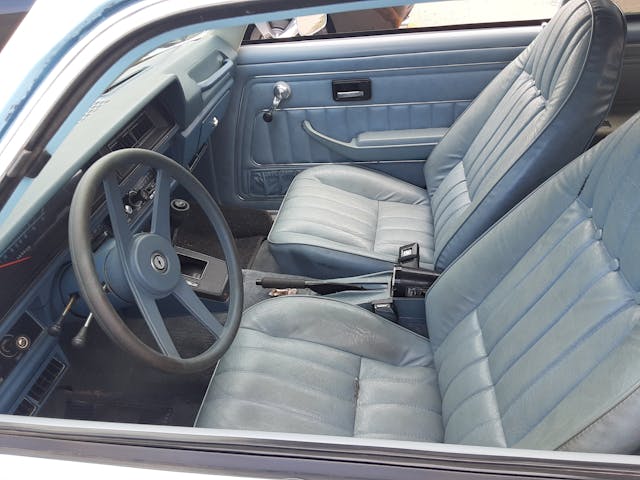
I can’t speak for every Vega owner out there, of course. But my aunt Lori Klockau had a mid-’70s Vega Estate as a student teacher at the University of Iowa back then. Believe it or not, it was a Vega Estate, too. At any rate, she drove it for several years, and that little woody wagon ran like a Swiss watch. She never had any trouble with it. Of course, others’ mileage may vary. But even today Aunt Lori remembers that car fondly.
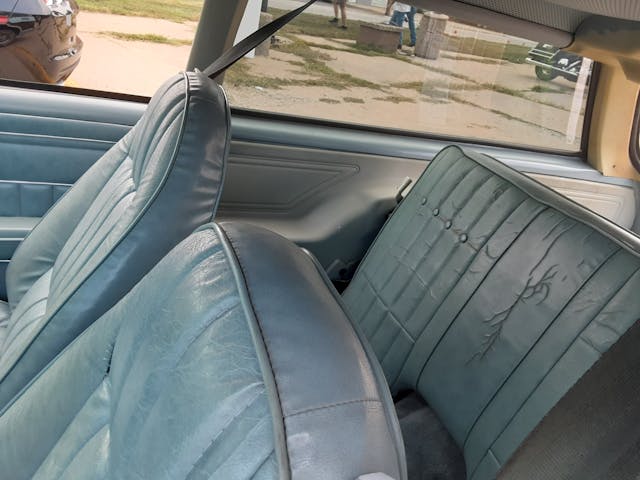
As for the 1977 Vega Estate, naturally it was a bit flossier than the plain-Jane Vega wagon. The biggest attraction, of course, was the “New simulated oak wood-grain paneling with simulated wood-grain outline moldings on the rear and full side panels.” The “new” must have been referencing the type of wood-grained paneling used, since there had been woody Vega wagons since 1973.

Other extras on the Estate included full wheel covers, deluxe bucket seats and trim, custom door panel and rear side panel interior trim, a day/night inside rear view mirror, the all-important (in the 1970s) rear seat ash trays, and more. A Vega GT wagon was also available, though there were no separate production breakouts I could find.
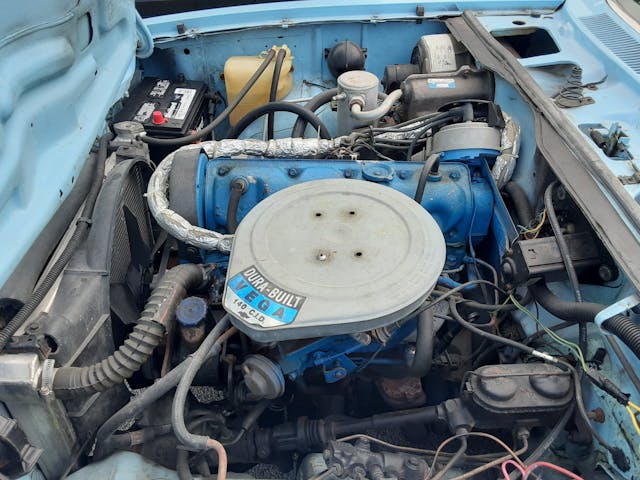
Our featured Vega Estate was finished in code A-2929 Light Blue with a complementary light blue vinyl interior, and optional Rally II wheels. It also appeared to have factory Four-Season air conditioning, judging from the vents along the bottom of the instrument panel.
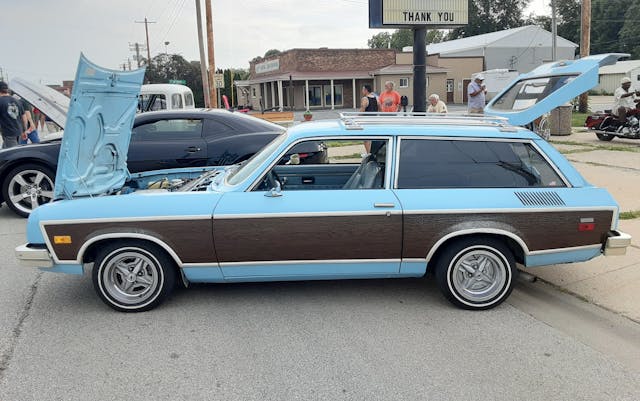
I had just gotten over gawking at a 1976 Lincoln Continental Town Coupé at the show when I saw this Vega woody and briefly lost my mind. Holy cow, what a rare birdie! I have seen a few Vegas, but frequently they are hot rodded with a small-block Chevy V-8 and fat rear tires. But here was a bone-stock Vega—and an Estate!
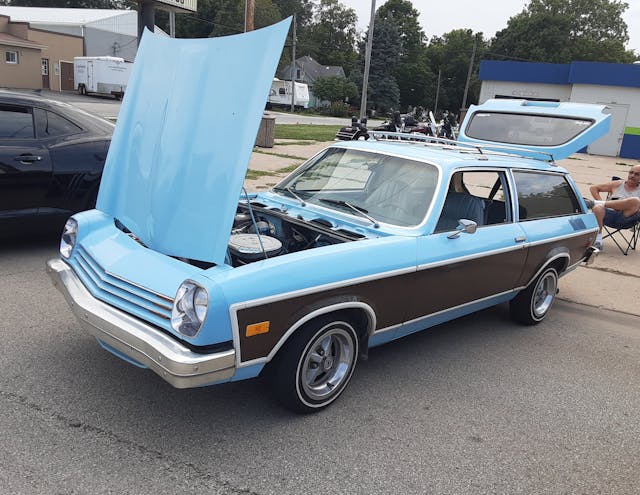
I’m not 100 percent certain, I may have seen one or two long ago when I was a kid in the ’80s, but this was definitely the first Estate I’d seen in 25 years, at least. Yumpin’ yiminy!
After I regained consciousness and a nice lady helped me stand up, I began taking many, many photos of it. I loved it. I spoke with the owner, a very nice guy, and he confirmed it was a 1977. I knew it was either a 1976 or ’77, due to the grille. What a time capsule—not mint, but a very honest original car. It was a treat to see!
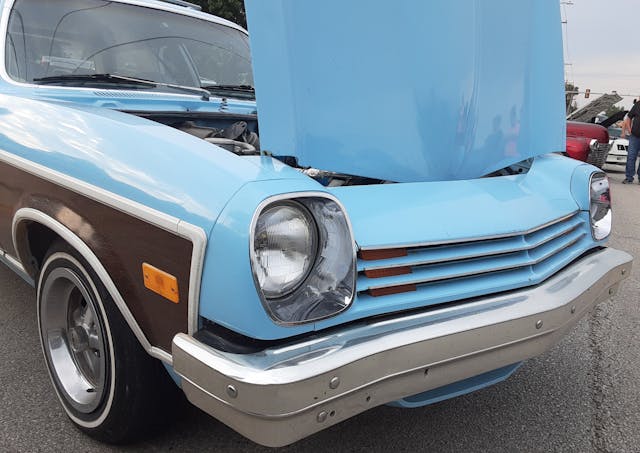
***
Check out the Hagerty Media homepage so you don’t miss a single story, or better yet, bookmark it. To get our best stories delivered right to your inbox, subscribe to our newsletters.

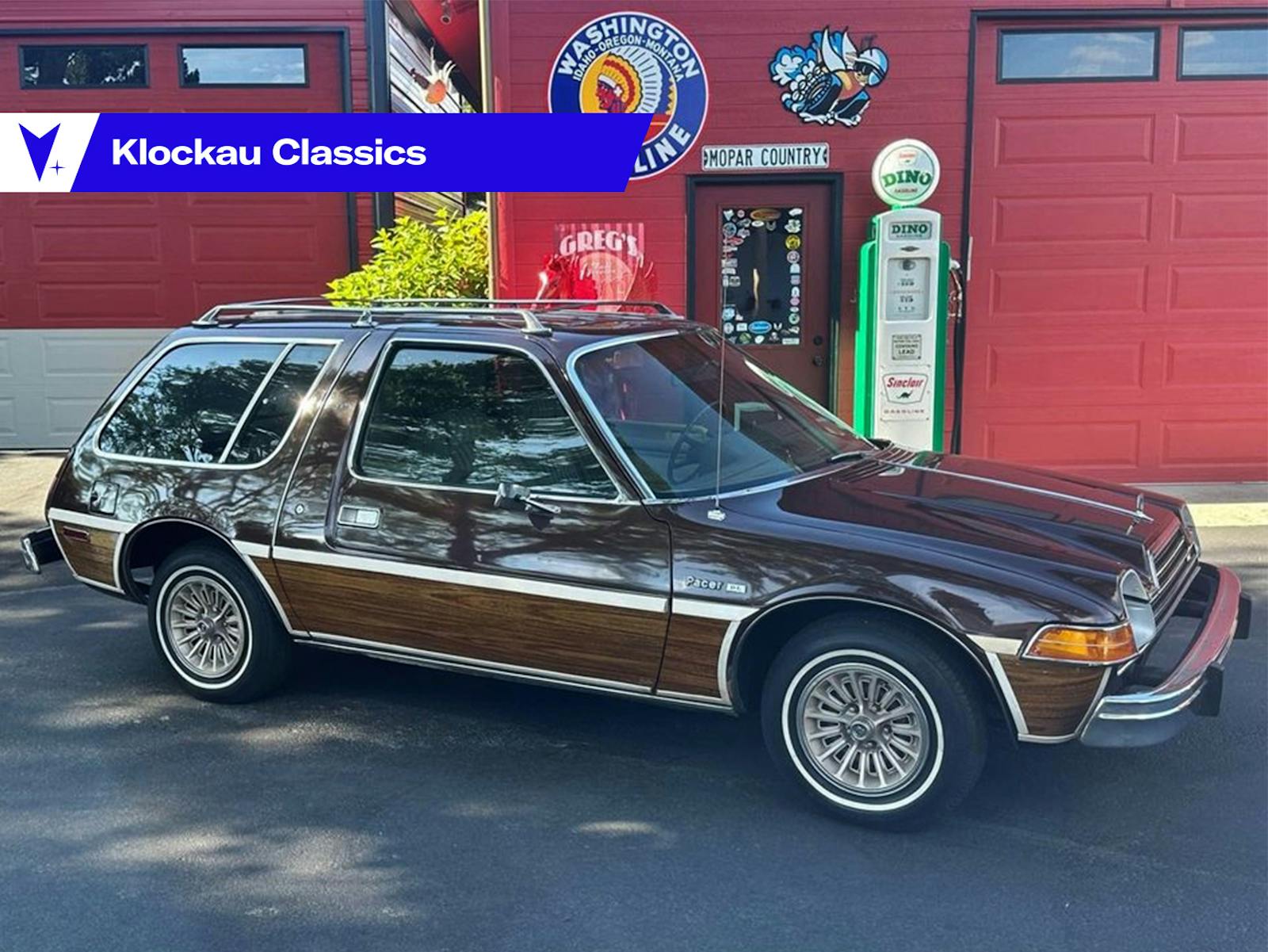
My 72 Vega GT developed holes in the top of both front fenders after the first year. GM gave me one fender. My brother owned a body shop and change it and painted it. I was on a trip and a Radiatot hose split, and by the time I got off the highway (one minute) The motor warped, and the pistons didn’t seal very well in an oval cylinder. GM refused to cover it even after the regional man looked at it. I was going to Ohio on business and so I just continued on with it smoking. In Ohio, a tornado went through the town I was staying in, and the storm included coffee cup sized hail. Thankfully, it destroyed the car, and the insurance covered the totaled lump.
Had an earlier base wagon. The early cars did have rust issues, and was the ultimate demise of mine.
As for the engines. It took a while for GM to figure out the coated cylinders (which is why the Astre clone ended up with the ‘Iron Duke’). Mine ran fine, well so long as you added a quart of oil every 200 miles and cleaned the fouled #3 plug. It was too bad. Even in that condition, it would easily get 20+ mpg.
I delivered prescriptions in a pretty red 1973 Vega hatchback for 3 years, 1973-1976. It had a few issues, but even after 3 years in the sometimes snowy, salty Midwest, had no visible rust. It seemed to need somewhat frequent oil changes: it would start burning oil, and the owner would have the oil changed, and the burning would nearly stop. (Huh?) It was slow (140-1V and TurboHydramatic) accelerating, but could easily top 70 MPH when in tune. Handling and ride were OK, (springless?) seats comfortable, and brakes good. Winter traction with snows or Michelin X radials was decent. They later traded it for a dumpy little four-door Chevette, which may (or may not) have been a better car, but sure as heck didn’t look better!
A rare bird, indeed. A few years ago, a guy down the street from me had a really, really nice stock 1972 Vega Panel Express – likely even rarer!
One might think that the owner would have cleaned out the front floor of his car, before taking it to a show/cruise. Good grief!!
I was buying ‘on time’ used Red Wagon from friend 77 or 78, fun to drive w/ stickshift. Long story short: cracked steel rod, damaged aluminum block… gave back…too expensive to fix for me…don’t know what became of it…
The Chevrolet Vega was a very low cost car . Within a short period of time , a lot of new Vega owners started having problems with them and soon were dissappointed in their purchase . The aluminum engines started burning oil , rusting bodies were a common problem as well as other issues . As a result , the Chevrolet Vega soon had a bad reputation and eventually was discontinued . Maybe it was a good thing ! Happy Motoring